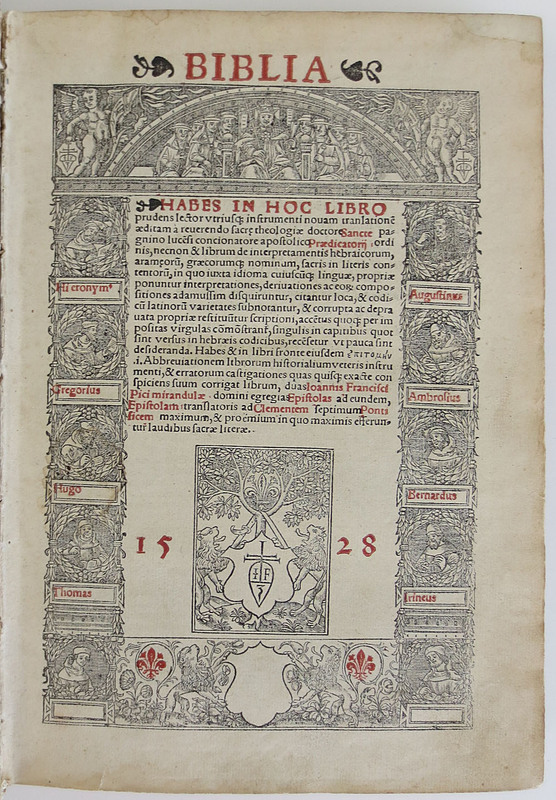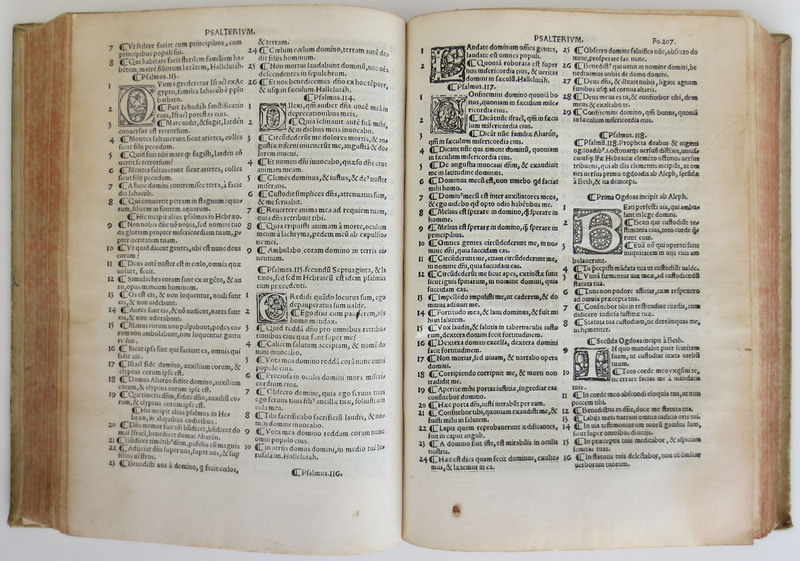Biblia. 1528
Biblia: Habes in hoc libro prudens lector utriusq(ue) instrumenti nouam tranlationē / æditam à reverendo sacre theologiæ doctore Sancte pagnino lucēsi ...
Lugduni [Lyons]: Antoine Du Ruy for F. Turchus, D. Berticinius and J. De Giuntis, 29 Jan. 1528.
Call Number: (RARE) BS 90 1528
Special Collections, Golda Meir Library
The sixteenth century saw several new Latin Vulgate translations of the Bible from the original Hebrew and Greek texts. The dominant version was that of Italian Dominican Pagnini, who undertook the project in 1500 under the sponsorship of King Leo X. Pagnini's translation was issued in 1528 with commending letters granting privileges to the text, including a letter from Renaissance philosopher Pico della Mirandola.
This 1528 Bible is the first printing of Pagninus' translation; a version esteemed for its closeness to the original tongues. Pagnini was criticized by reformationist Martin Luther for excessive literalism and "Jewish scholarship." This closeness to the Hebrew was well received by Jewish scholars, who judged Pagnini's translation as the only adequate Christian Latinate version of the Bible.
Pagnini's presentation was among the first attempts to print a Bible with standardized verse numbers. The numbering effort was erratic; with a separate section for the Apocrypha and verses of wildly variant lengths. Pagnini's numbering system was eventually abandoned for that developed by French Bible printer Robert Estienne. The carefully annotated and numbered Pagnini Bible shows the text's iconography as a progressive scholarly endeavor, rather than an unchangeable dogmatic document.


